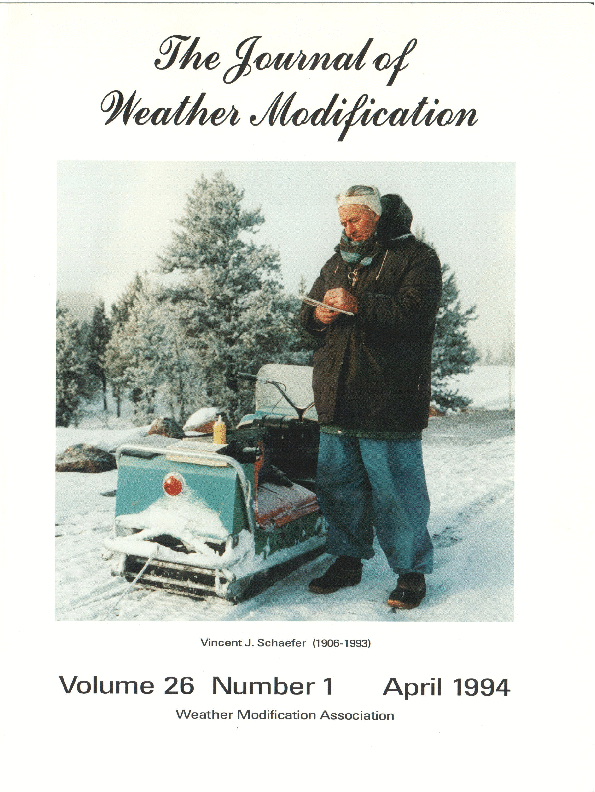Testing of Dynamic Cold-cloud Seeding Concepts in Thailand Part II: Results of Analyses
DOI:
https://doi.org/10.54782/jwm.v26i1.293Abstract
Part Il provides the results of analyses of Thailand’s randomized, exploratory, cold-cloud, seeding effort. The sample is small and caution should be exercised in interpreting the results of these analyses. A total of 151 convective cells (87 seeded and 64 nonseeded) have been identified within the experimental units and their properties computed through analysis of three-dimensional, volume-scan, S-band radar data using cell tracking software. The results indicate that AgI seedimg may have increased the maximum cell areas by 25%, durations by 14% and rain volumes by 69%. Little effect is indicated on maximum cell heights, which may be due in part to underestimation of the glaciated tops of AgI-treated clouds by the S-band radar. Additionally, within the height range of 7 to 11 km, seeded cells of a given maximum echo top produced more rain volume than unseeded cells of the same height. None of the results has strong statistical support. Partitioning by cloud base temperature increased the apparent effect of seeding to 71%, 33% and 125% for cell areas, durations and rain volumes, respectively, within the warm base (T > 16 degrees C) partition. The apparent effect on maximum cell height is on the order of +6%. The results for the small sample (i.e., 7 Seed and 7 NS) of experimental units also show more S than NS rainfall. All results are comparable to what has been reported by the first two authors for a similar program in Texas, and are discussed in the context of the conceptual model guiding both experiments. This work was conducted under a contract with the Bureau of Reclamation part of a program sponsored by the U.S. Agency for International Development to upgrade Thailand’s weather modification capability.Downloads
Issue
Section
Scientific Papers
License
Authors that submit papers for publication agree to the Journal’s copyright and publication terms. Authors retain copyright and grant the journal right of first publication with the work simultaneously licensed under a Creative Commons Attribution License that allows others to share the work with an acknowledgement of the manuscript’s authorship and initial publication in Journal of Weather Modification. Authors are able to enter into separate, additional contractual arrangements for the non-exclusive distribution of the journal’s published version of the work (e.g., post it to an institutional repository or publish it in a book), with an acknowledgement of its initial publication in the Journal of Weather Modification. Authors are permitted to post their work online (e.g., in institutional repositories or on their website) prior to and during the submission process to encourage productive exchanges and greater citation of the published article.
Articles are published online using restricted access for the first year. After the first year, articles are made freely available online. Immediate open access for an article may be obtained by the author paying an open access fee which is in addition to the normal page changes. Authors are expected to honor a page charge in order to support publication and distribution of the journal. After the author approves the gallery formatted version for publication, the Weather Modification Association’s Secretary will invoice the corresponding author for the page charges and payment is due within 30 days.
How to Cite
Testing of Dynamic Cold-cloud Seeding Concepts in Thailand Part II: Results of Analyses. (1994). The Journal of Weather Modification, 26(1), 72-82. https://doi.org/10.54782/jwm.v26i1.293




